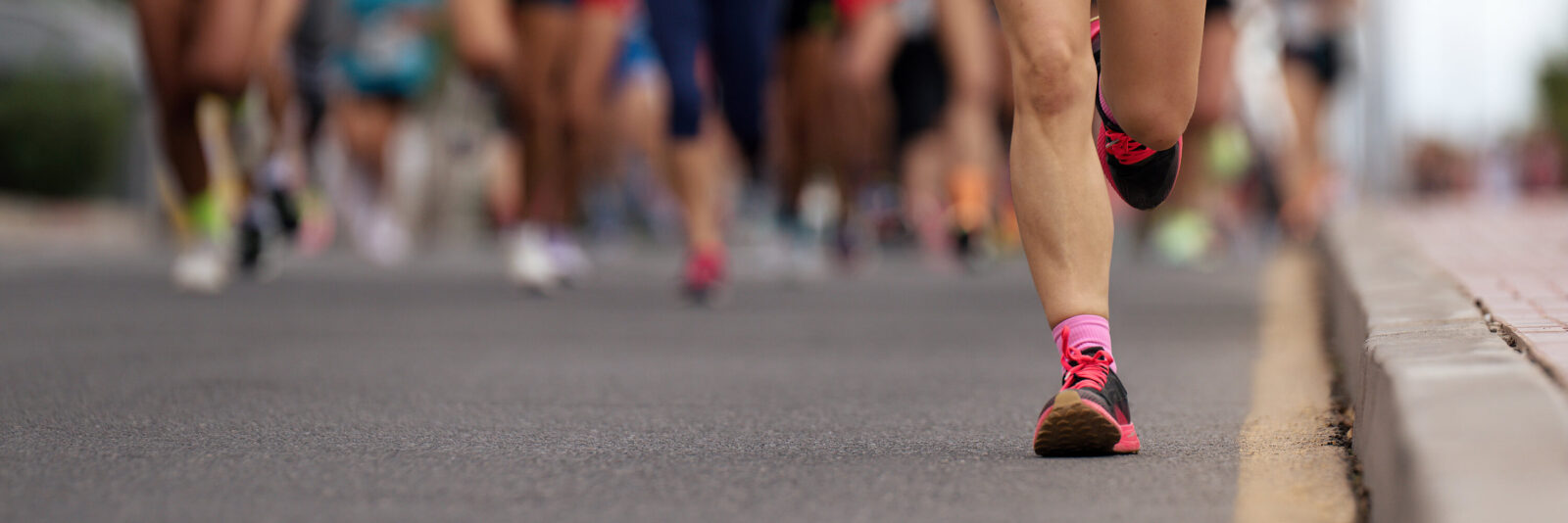
Medically reviewed by Misty Seidenburg
Running a marathon is an impressive mental and physical challenge that requires considerable preparation. Whether you are looking forward to your first race or are an avid marathoner looking to improve your performance and prevent injuries, physical therapy can help. Learn how to prep for your race and the best ways to ensure a full marathon recovery.
Before starting any new fitness regimen, it is important to see your healthcare provider to determine if you can safely participate in a marathon. Once you are cleared to start training, an evaluation with a physical therapist is a logical next step.
Physical therapists are licensed professionals who understand how the body’s structures function together to create movement. They use evidence-based treatments and therapies to improve the body’s ability to perform physical movements. Under the guidance of a skilled physical therapist, runners can reach peak performance and lower their risk of musculoskeletal pain, inflammation, and injuries.
An initial physical therapy appointment is the starting point for your marathon training program. The first visit consists of an examination and evaluation to assess and measure strength, balance, range of motion, and palpitation. These assessments help your physical therapist identify muscle imbalances and weak spots that can lead to injuries. They also serve as a baseline to track future progress.
Based on your evaluation and fitness goals, your physical therapist creates a personalized marathon training program that may include:
Sports therapy for runners offers a supervised, well-rounded plan to start running safely and gradually increase intensity and distance in time for your marathon. Every marathon training program is customized for the runner’s unique physical needs. Your training plan is continually updated as you progress and reach key milestones, and adjustments are made as needed.
Recovery is another critical component of physical therapy for marathon runners. What you do in the hours and days after a race can significantly impact how you feel and how your body rebounds from what it has endured.
In scientific terms, marathon recovery is when all physiological stress markers in the blood, like muscle damage and inflammation, have returned to normal levels. Depending on the runner’s fitness level and race performance, this can take up to 4 weeks.
Post-marathon recovery starts immediately after a long-distance run. Your body has just completed an incredible physical feat and deserves some TLC.
Start with food and hydration. To promote tissue recovery, choose a balanced diet of protein, healthy fats, and carbohydrates. For rehydration, stick to water and/or electrolyte-rich fluids.
Stretch it out. Static stretches involve moving a muscle as far as you can without pain and holding for a short time (15-45 seconds.) Runners should focus on stretching the quadriceps, hamstrings, calves, and iliotibial bands. These stretches improve circulation, reduce stiffness, and keep muscles long and flexible.
Get some rest. Take some downtime to allow the body to regenerate and repair damaged tissues. You will be sore, so stick to light activity only. Also, avoid ibuprofen, which can slow down the healing process.
Try hands-on therapy. After race day, you can introduce manual recovery aids and techniques like massage and foam rolling to reduce inflammation and encourage healing. Physical therapy offers many manual methods to ease pain and stiffness after intense physical activity.
Gradually resume activity. Ask your physical therapist when you’re ready to start running again. Generally, waiting 5-7 days after a long-distance race is recommended. In the meantime, you can begin with short walks and other low-impact activities like swimming or cycling. Once fully recovered, you can reintroduce short runs, progressively increasing your speed, intensity, and distance over time.
Request your physical therapy appointment
Experience individualized treatment at one of our premier clinics. Request your appointment with BenchMark Physical Therapy now.
While a solid marathon training plan helps reduce the risk of injuries, it’s impossible to prevent them entirely. Common running injuries include sprains, strains, tendinopathy, shin splits, and IT band syndrome. Physical therapy is an effective tool for helping runners rehabilitate sports injuries.
It incorporates evidence-based treatments, therapeutic exercise, and stretching to restore function and mobility. If you have ankle, hip, back, knee, or leg pain after running, don’t allow it to get worse. Running through pain can lead to more severe complications.
Whether you are training for your first race, rehabbing from a running injury, or looking for ways to move and perform at your best, tap into the benefits of sports therapy. Find a physical therapy clinic near you to schedule an assessment today.